In programming, the manipulation of variables plays a crucial role. Particularly important are the increment and decrement operations, which offer a simple and efficient way to increase or decrease values. In this tutorial, you will learn how to effectively use these operators in Java to optimize your code and make it more readable.
Main insights
- Increment and decrement operators provide a shorthand way to increase and decrease variables.
- The difference between prefix and postfix variants can affect how your code behaves.
- The special assignment operators (+= and -=) reduce code size and make it clearer.
Step-by-Step Guide
Step 1: Basics of Counter Variables
First, we create a counter variable. This typically happens in loops or for counting operations. Initially set the value of Counter to 1, meaning you define: Counter = 1.
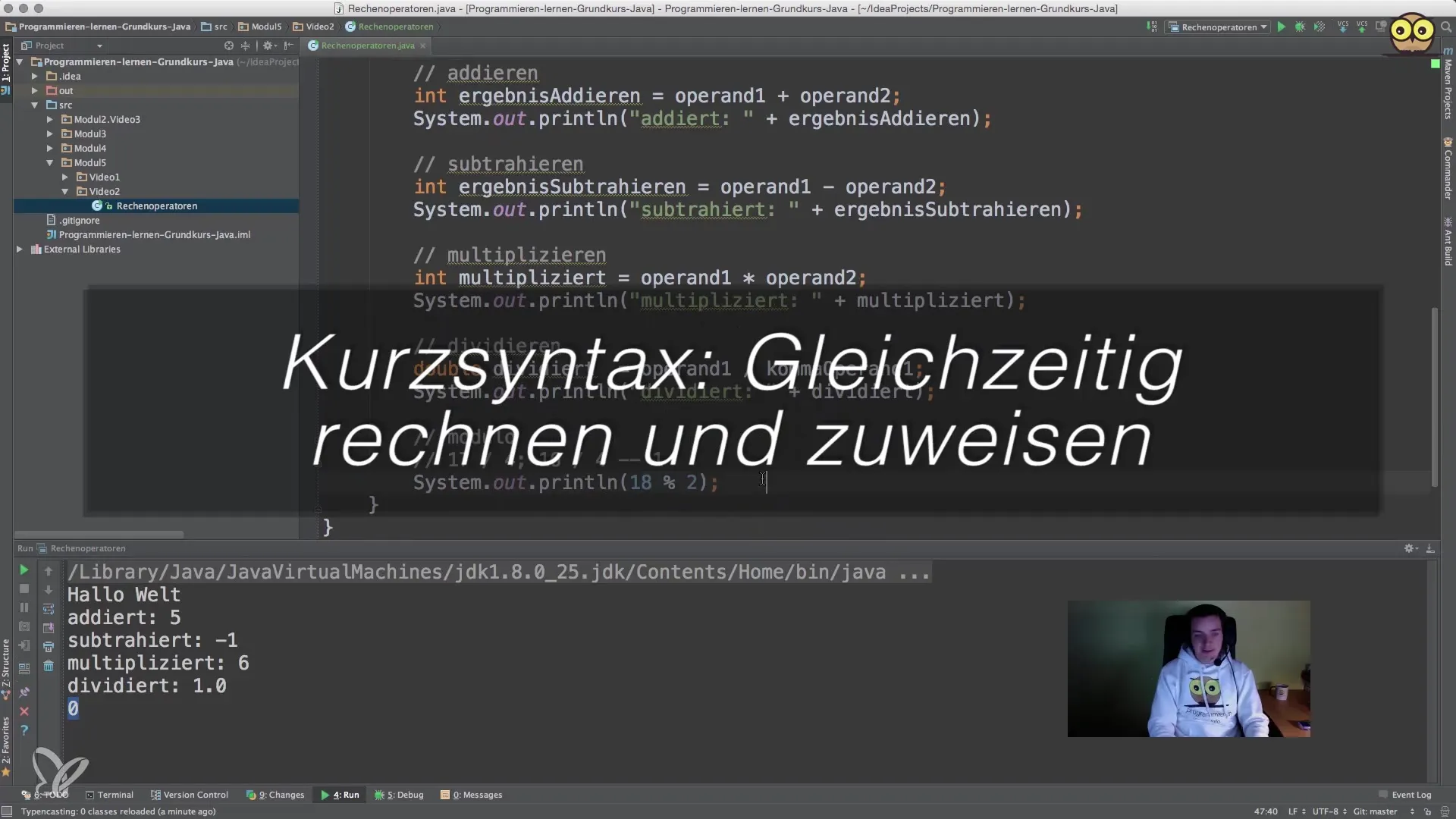
Step 2: Using Assignment Operators
Now we use the assignment operator += to increment Counter by 1. This means you write: Counter = Counter + 1. However, in Java, you can use the shorthand: Counter += 1.
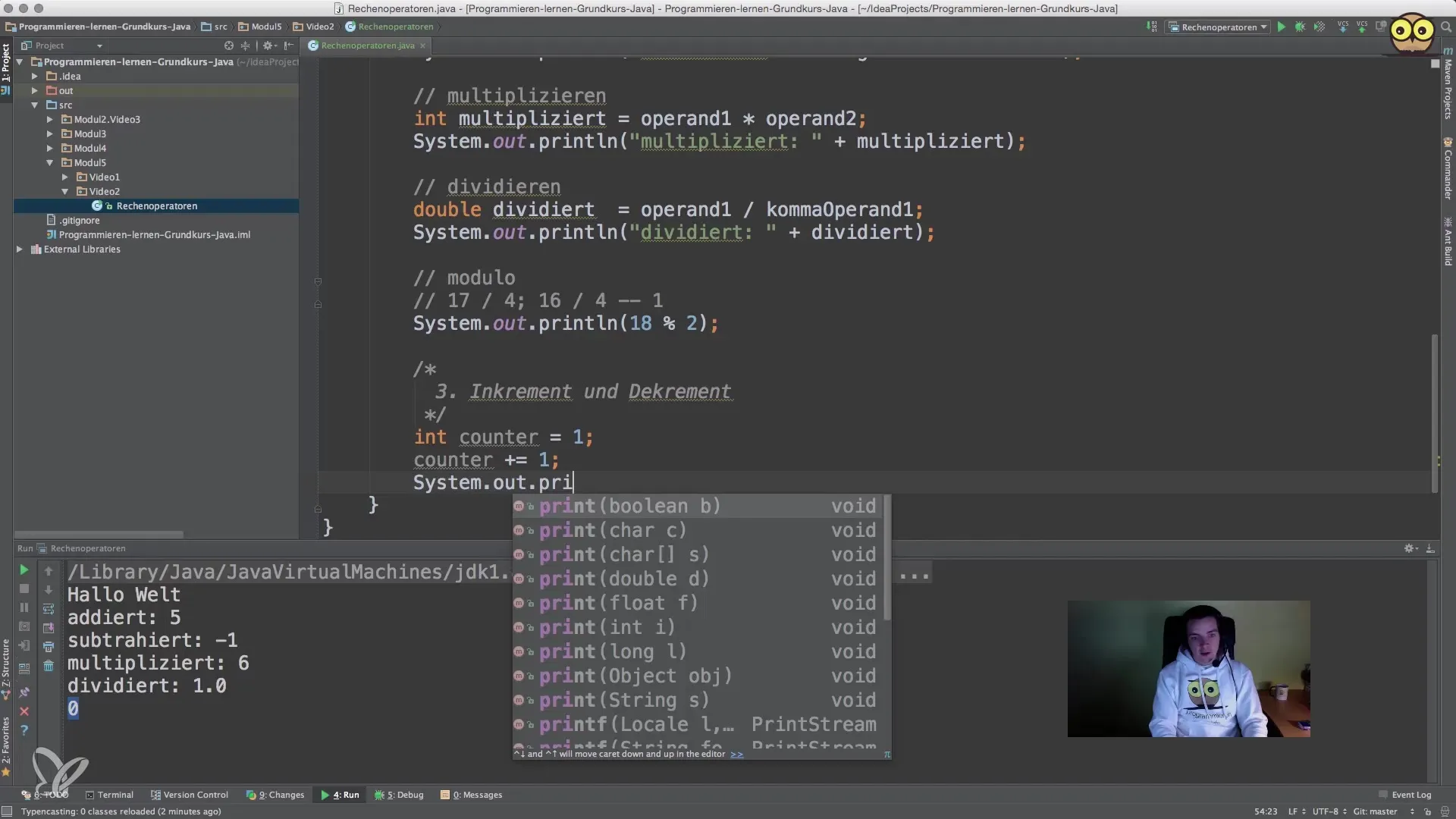
Step 3: Increment Operation
This is where the increment operation comes into play. You can use the shorthand Counter++ to increment Counter by 1. This method is not only shorter but also improves the readability of your code. If your Counter currently has the value 2, it will now be 3.
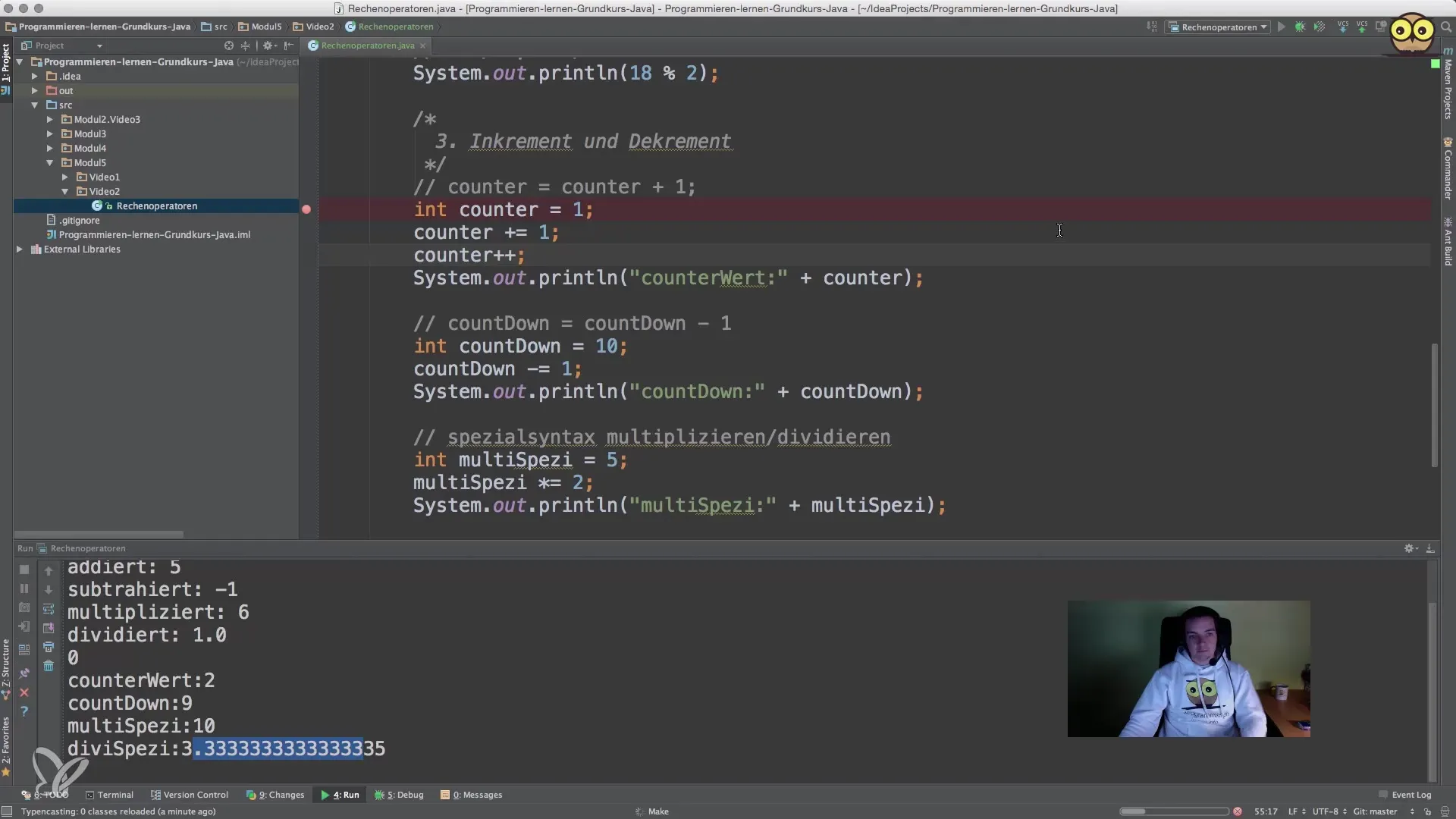
Step 4: Decrement Operation
The counterpart to the increment operation is the decrement operation, which you implement with the operator --. If we set Countdown to 10 and then use Countdown--, the value of Countdown decreases by 1. This means Countdown is now 9.
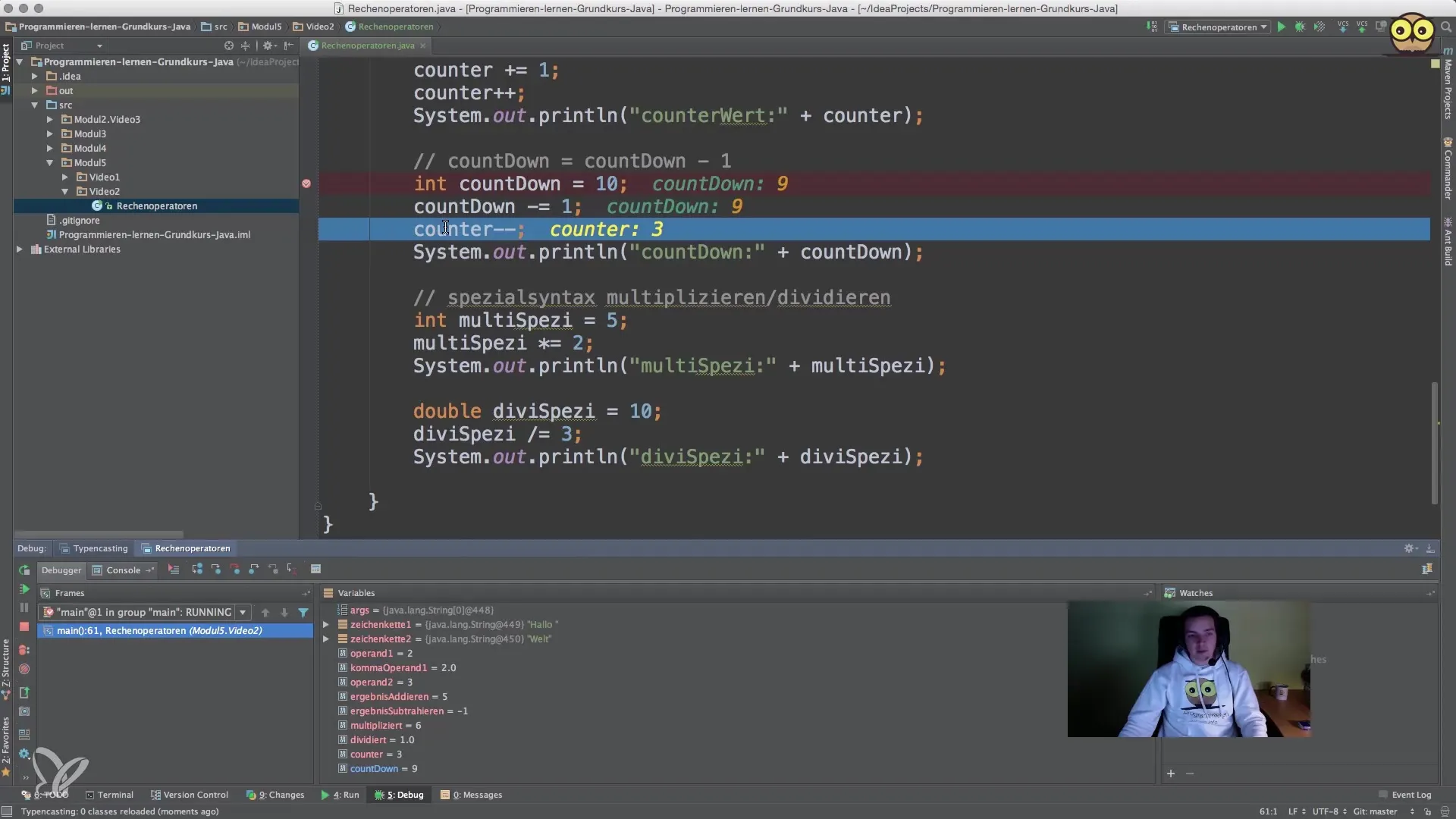
Step 5: Multiplication and Division with Shorthand
Besides using increment and decrement operators, there are also shorthand notations for other mathematical operations. For example, you can multiply with *=. If MultiSpezi has the value 5, with MultiSpezi *= 2, the value increases to 10.
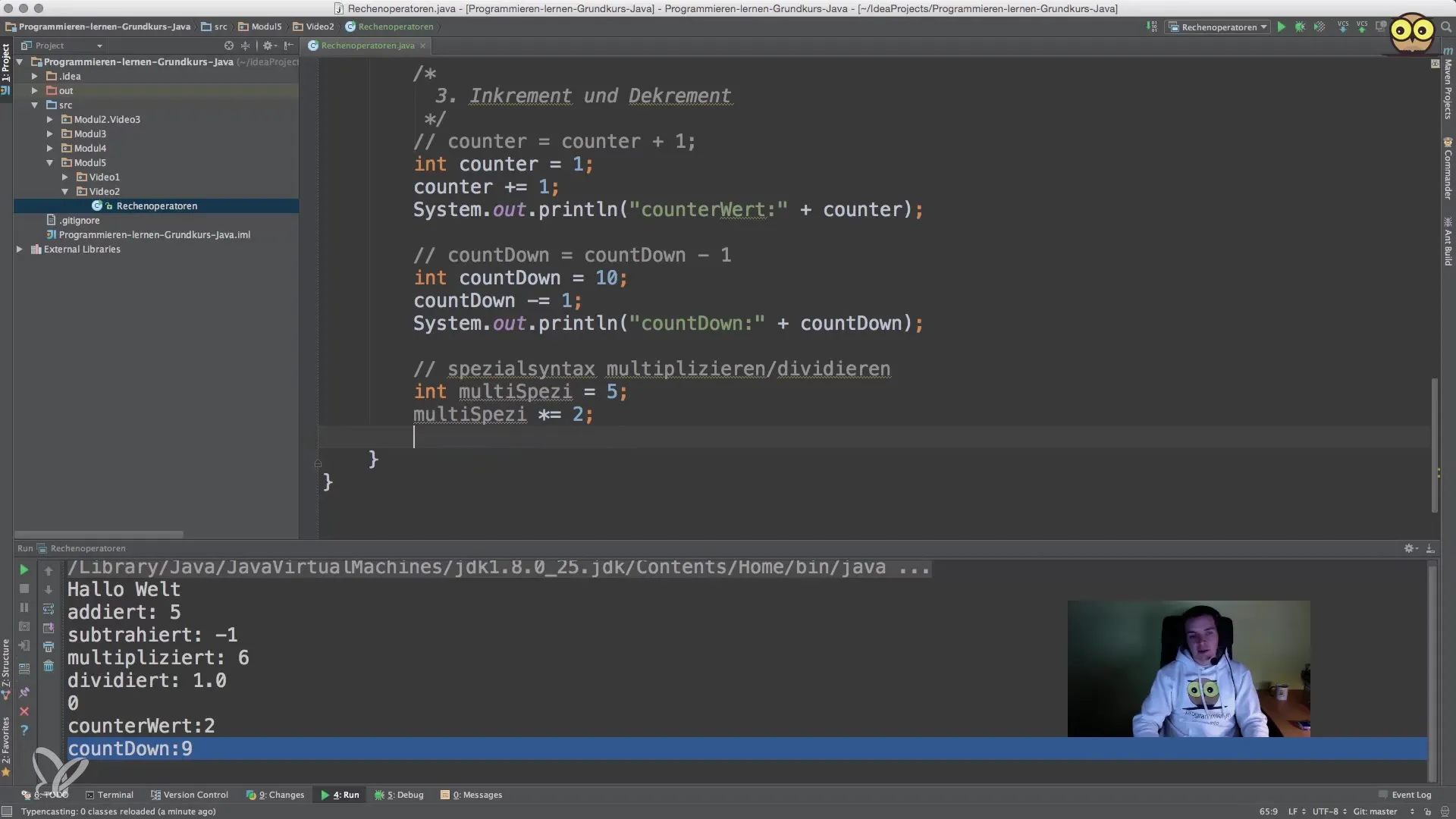
For division, you use the /= operator. If DivSpezi is set to 10, using DivSpezi /= 3 changes the value in the variable to 3 (considering the integer part).

Step 6: Prefix and Postfix Operators
Another important point is the differences between prefix and postfix operators. With ++Counter (prefix), the value of Counter is increased by 1 before it is used. With Counter++ (postfix), you first access the current value of Counter before it is increased by 1.
Screenshot_ ид57
Step 7: More Examples
You can experiment by combining both prefix and postfix operators. For example, you could use System.out.println(++newCounter); to immediately display the incremented value of newCounter, while System.out.println(newCounter++); shows the current value and only increments afterward.

Summary – Mathematical Operators in Java: Increment and Decrement Operators in Detail
In this tutorial, you learned the basics of increment and decrement operations in Java. Using these operators not only makes your code shorter and more readable, but also helps you perform calculations efficiently. Utilize the various shorthand notations and pay attention to the differences between prefix and postfix to get the most out of your programming.
Frequently Asked Questions
How does the increment operator work in Java?The increment operator ++ increases the value of a variable by 1.
What is the difference between prefix and postfix operators?Prefix operators increase the value before use; postfix operators do so afterward.
How do I use the decrement operator?The decrement operator -- decreases the value of a variable by 1.
Can I use the assignment operators for other types of calculations?Yes, you can use assignment operators like +=, -=, *=, and /= for various mathematical operations.
What happens if I use Counter++ and ++Counter in the same line?Both have different effects on the value of Counter, depending on the position of the operator.


